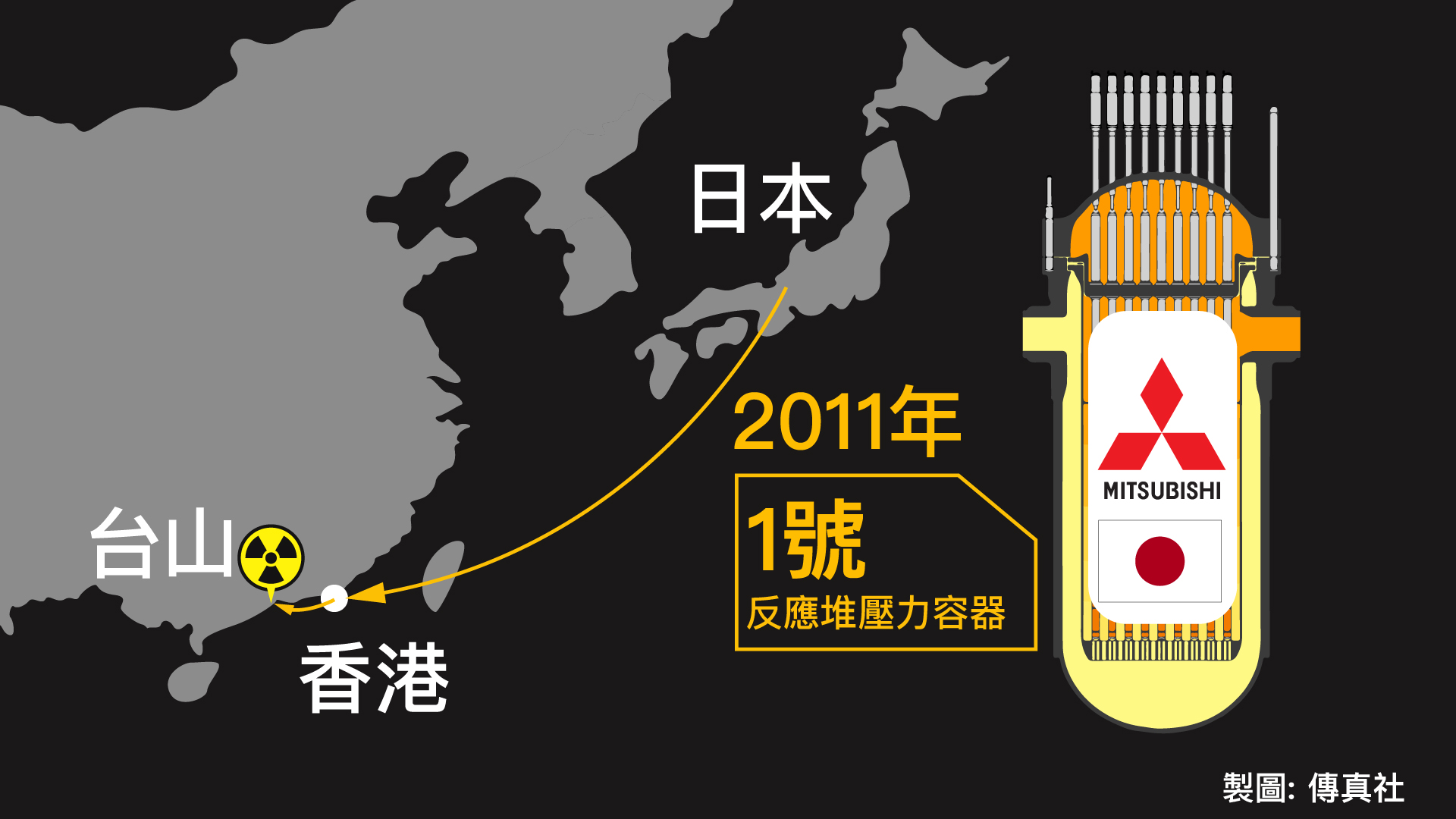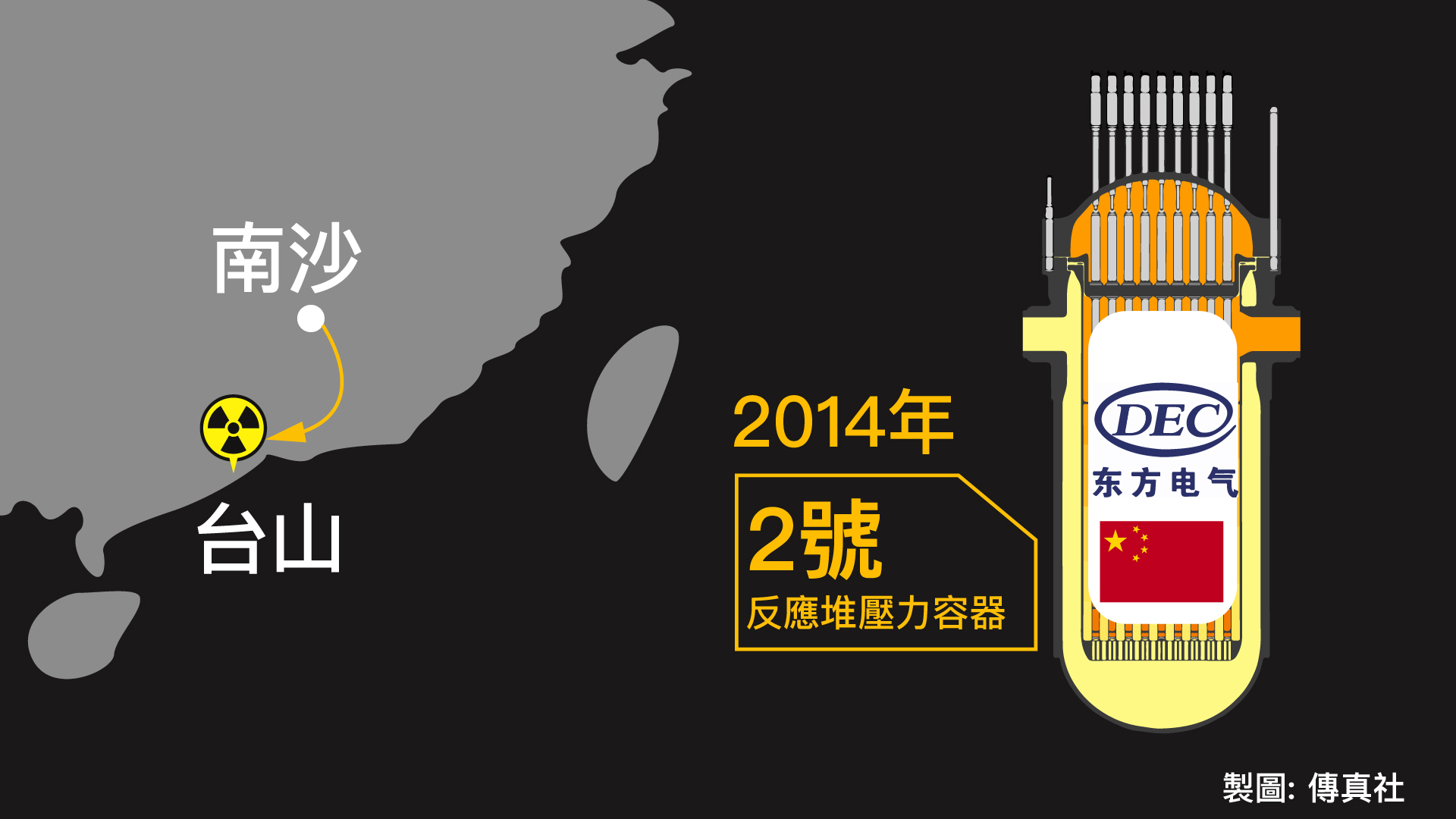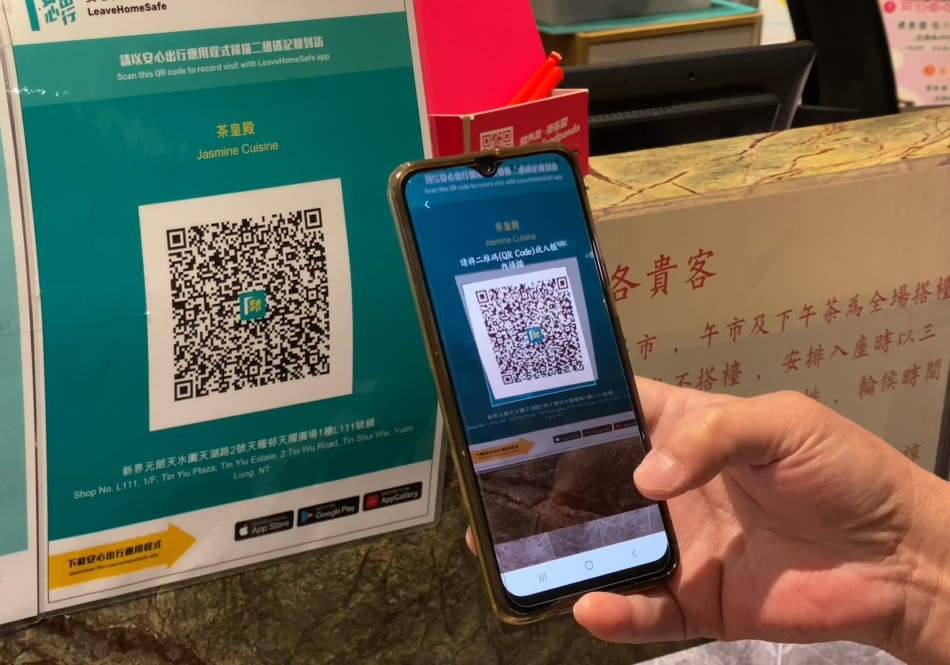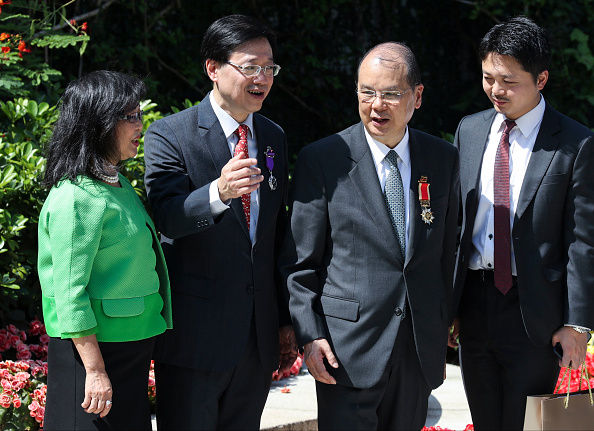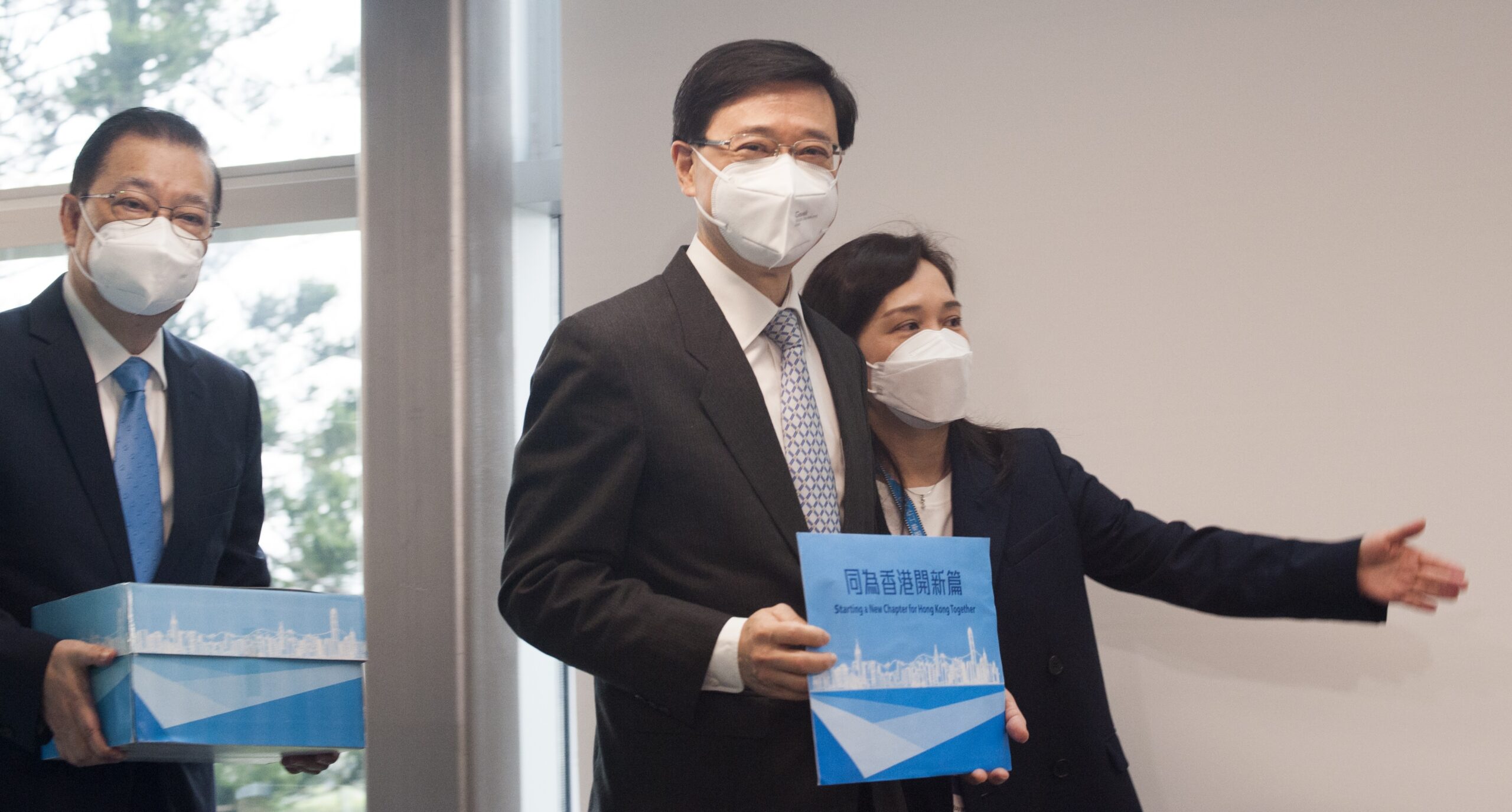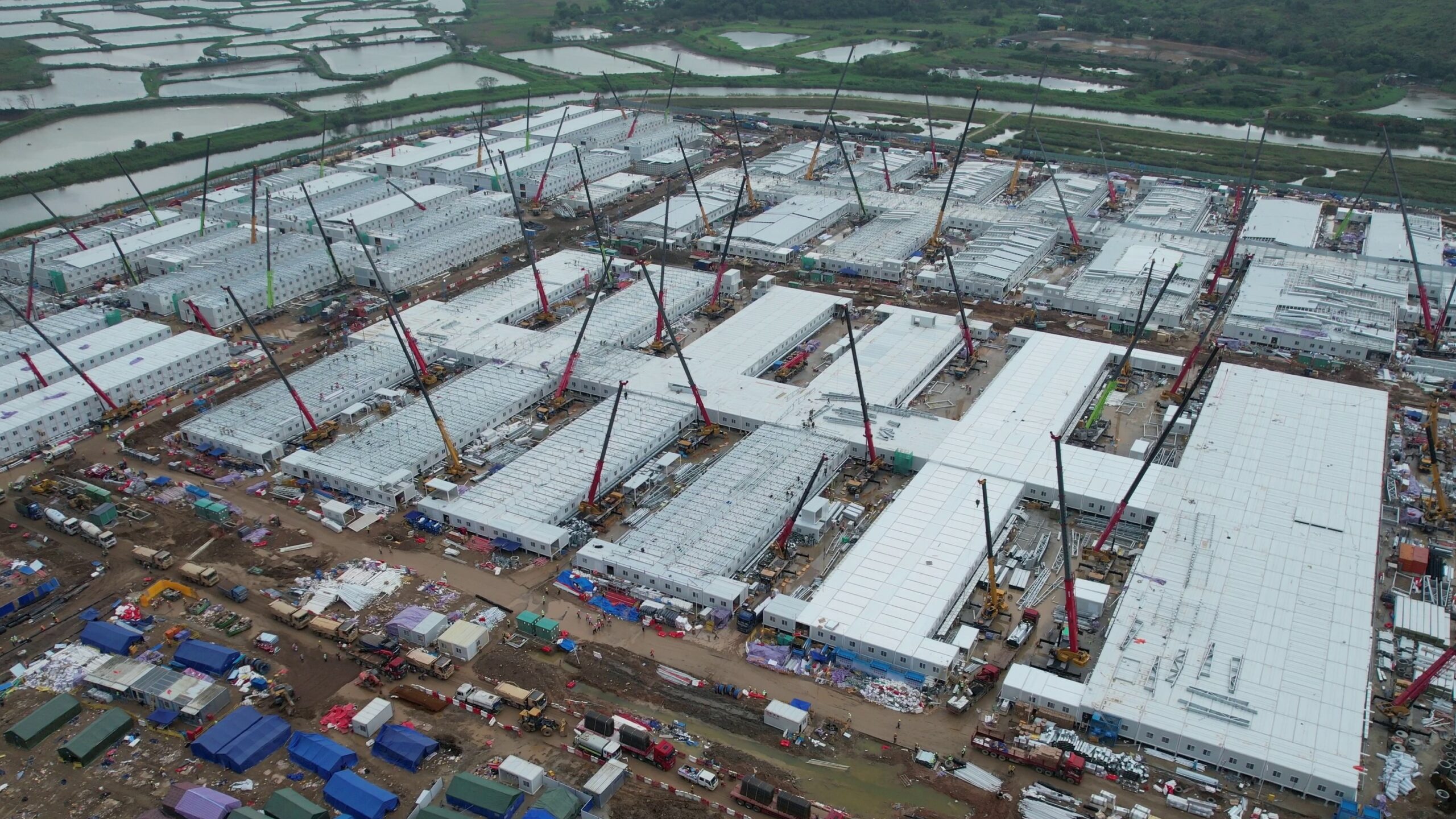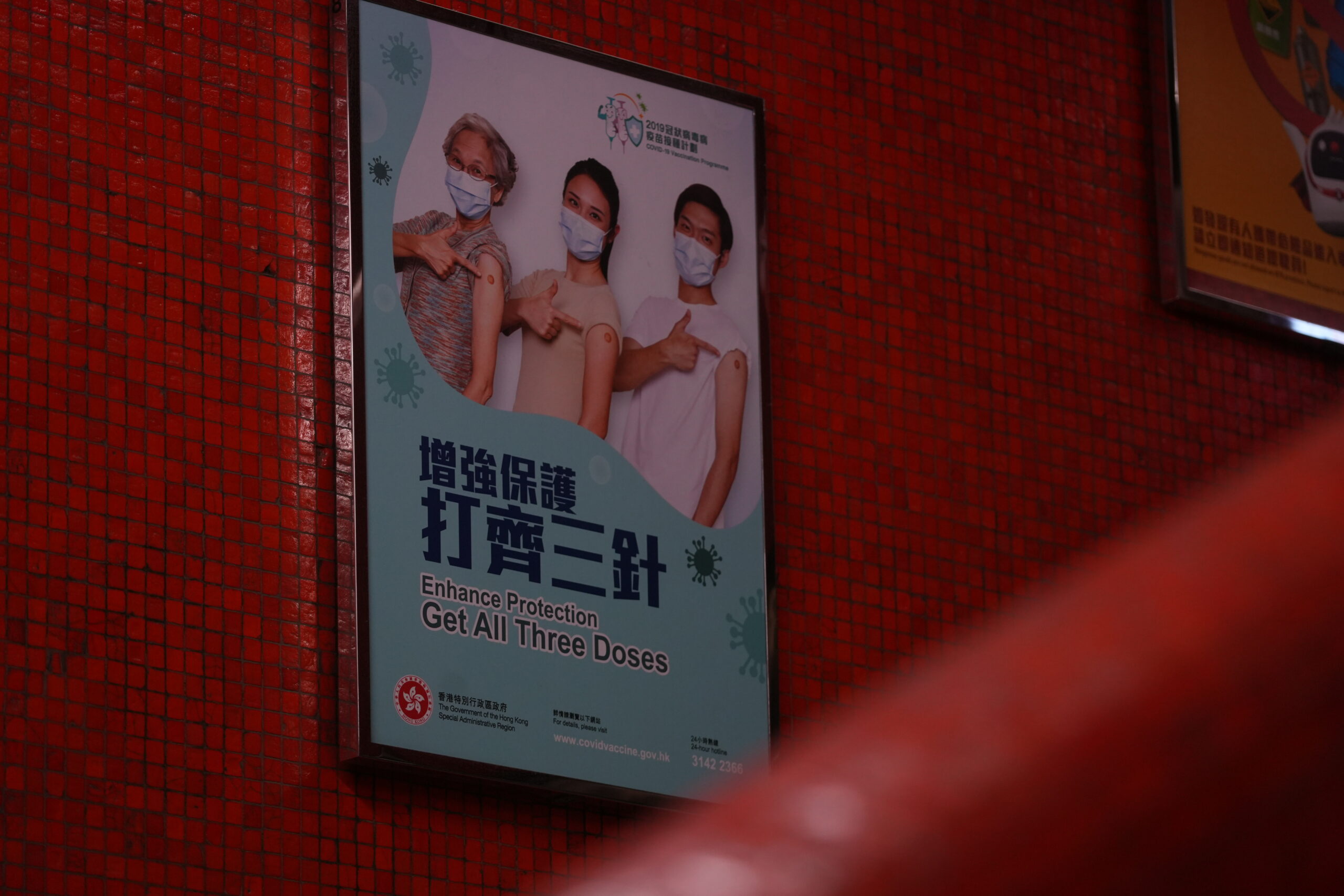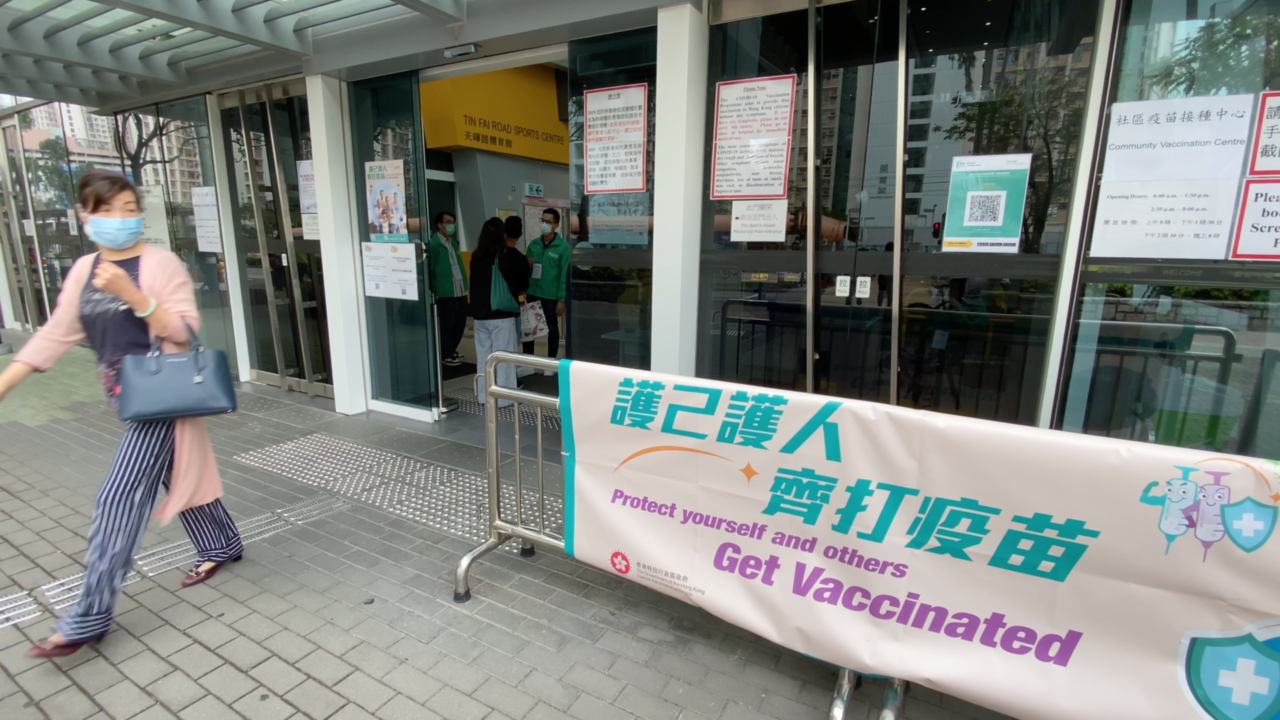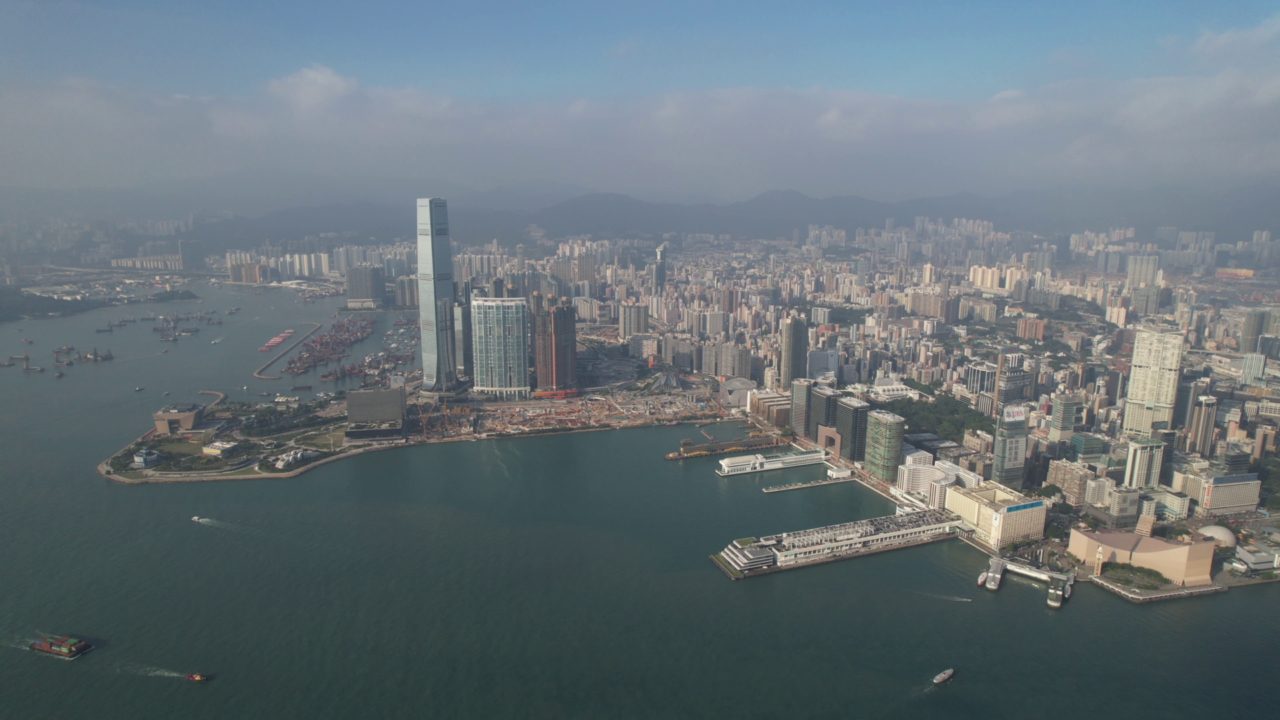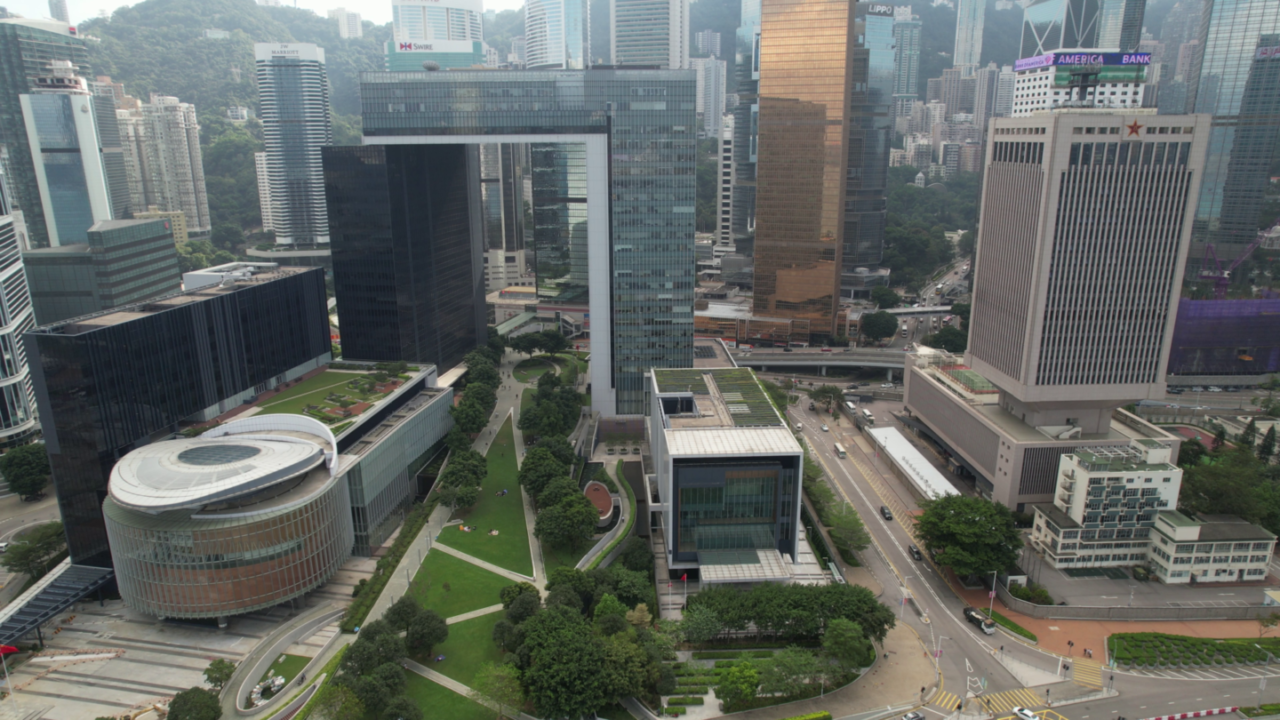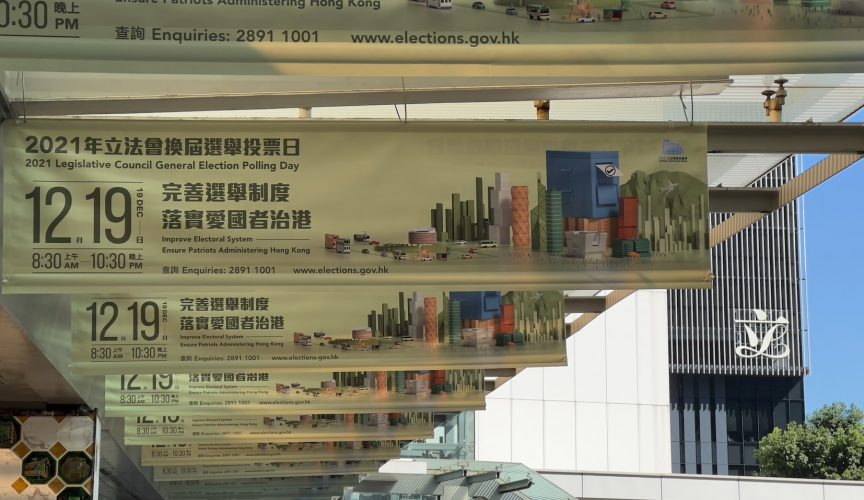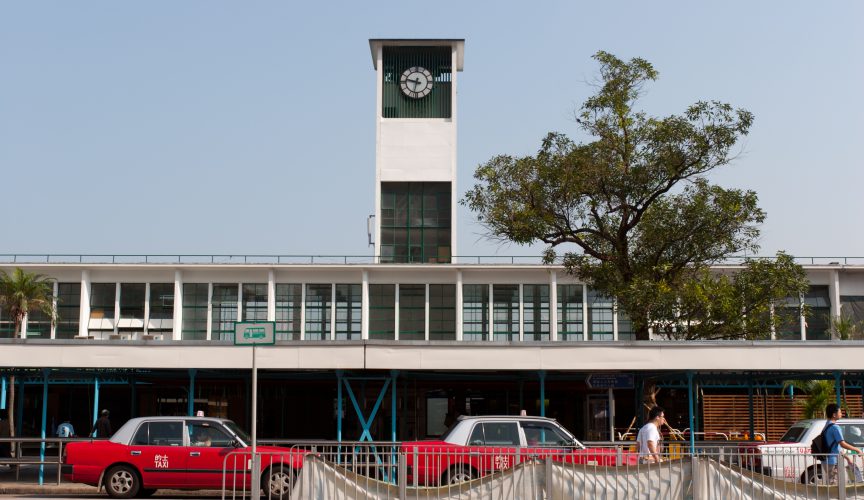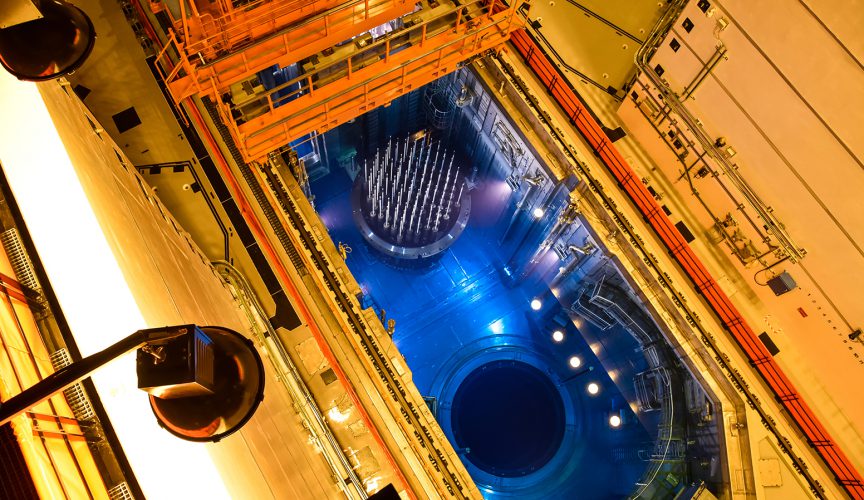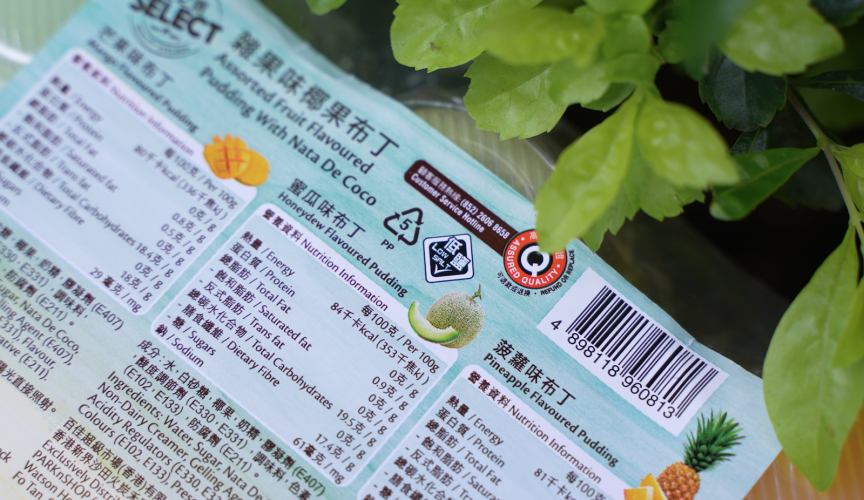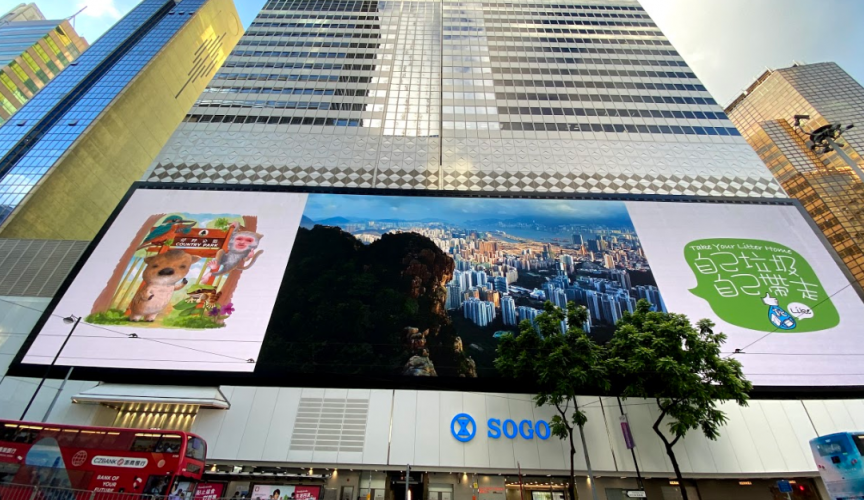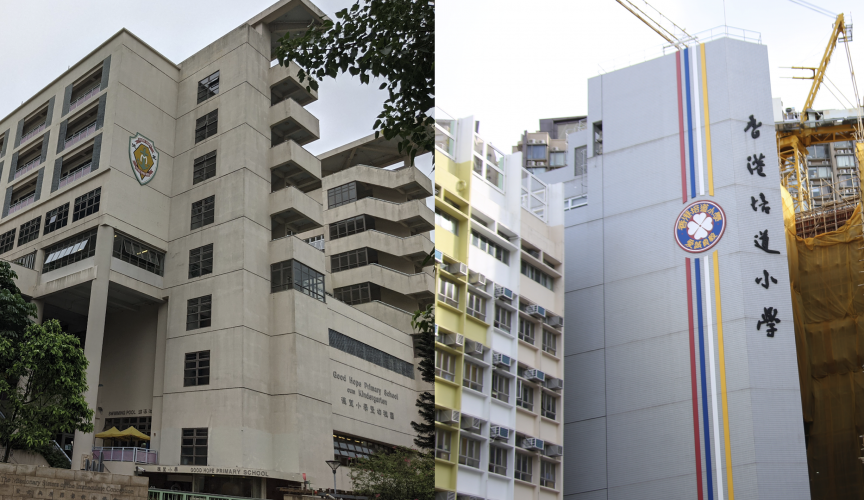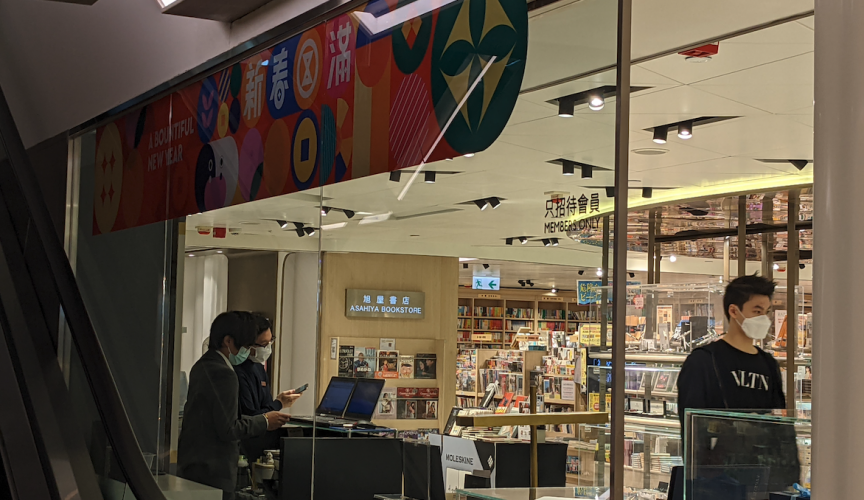Critical components of the Taishan nuclear power plant, including the reportedly faulty reactor pressure vessel, were made in China
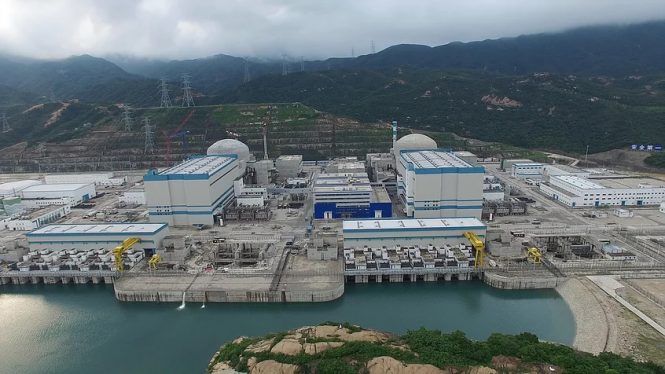
Critical components of the Taishan nuclear power plant, including the reportedly faulty reactor pressure vessel, were made in China, FactWire can reveal.
According to the contract published by reactor supplier AREVA, the pressure vessel in Unit 1 was made in Japan instead of being manufactured in France, as was previously believed. Key parts of Unit 2, including the reactor pressure vessel, were entirely manufactured in China. The revelation has surprised experts, with some saying that components made in China would pose a threat on safety issues.
Taishan’s nuclear power plant is jointly funded by China Guangdng Nuclear Power Group (CGN and Électricité de France (EDF). It uses third-generation European Pressurised Reactor (EPR) technology, the most advanced in existence. It features a core melt retention system and double-layered wall protection, allowing it to withstand plane impact and reduce the risk of radiation leakage in the event of an accident. However, last April, France’s Nuclear Safety Authority (ASN) discovered excessive carbon in the pressure vessel of an EPR plant at Flamanville, France, indicating that the vessel was too brittle and could potentially cause a radioactive leak.
A report by ASN said that the pressure vessel of Taishan’s nuclear power plant had been produced by Creusot Forge, a subsidiary of French group AREVA. However, AREVA’s public contractual information reveals that the pressure vessel was produced by Mitsubishi Heavy Industries in Kobe, shipped to Taishan via Hong Kong in 2011.
Several documents uncovered by FactWire reveal that the Japanese-made pressure vessels also have safety risks. In a November 2015 report by ASN, a problem was found in the manufacturing process provided to the supplier by AREVA, meaning that regardless of where it is manufactured, the pressure vessel will have excessive carbon.
A technical presentation by AREVA senior technical advisor Andrew Teller states that AREVA demands that manufacturers follow its designated material and production method. Most critical components of Unit 2, including the pressure vessel, steam generators, ressurizer main coolant pumps, and the reactor coolant lines were entirely manufactured by China’s Dongfang Electric Corporation (HKG: 1072). Dongfang Electric Corporation’s subsidiary Dongfang (Guangzhou) Heavy Machinery Company signed a contract with AREVA in June 2009. Construction of the pressure vessel commenced in December 2009, delivered from the factory in Nansha, Guangzhou to Taishan on October 22, 2014.
This has never before been publicised. Even when CGN’s subsidiary CGN Power (HKG: 1816) was first listed on the stock exchange in Hong Kong in December 2014, there was no mention of China manufacturing the key parts of the Taishan plant’s Unit 2.
Hong Kong nuclear energy expert Professor Woo Chung-ho, a former senior scientist at Atomic Energy of Canada, expressed surprise.
“I didn’t know China was able to produce a pressure vessel,” said Woo. “This component is quite special, it’s large. Every step in the manufacturing process requires strict control. The welding of the pressure vessel is highly complex because it is very thick and must be able to withstand high pressure, raising serious safety concerns.”
Policy convenor of the Professional Commons think tank, Lai Kwong-tak, said the fact that China had produced the major components of Unit 2, including the pressure vessel, raised serious safety concerns.
“AREVA has repeatedly had problems with product quality, even falsifying quality control tests, which China completely overlooked when they received the components,” said Lai. “It shows that China lacks real regulatory power and has always relied on safety measures carried out by the French.”
Lai said China was importing French nuclear technology with the ultimate aim of producing advanced nuclear reactors on its own. But as the launch dates of Unit 1 and 2 in 2017 are only half a year apart, it does not have enough time to master the technology.
China has been actively promoting state-developed nuclear technology on the international market in recent years. China National Nuclear Corporation successfully sold an ACP-1000 third-generation nuclear reactor to Pakistan, making it the first nuclear energy export from China. Turkey purchased four nuclear reactors from CGN in November 2014..
In the same month, when Chinese President Xi Jinping was visiting the United Kingdom, CGN jointly signed an investment agreement with Électricité de France (EDF) on the EPR of Hinkley Point, Sizewell and Bradwell nuclear power stations, with Bradwell expected to employ third-generation, Chinese-produced Hualong-1 nuclear reactors. The project sparked public demonstrations in Britain.
Group (CGN), the pressure vessel in Unit 1 was directly imported from Japan instead of being manufactured in France, as was previously believed. Key parts of Unit 2, including the controversial pressure vessel, were entirely manufactured in China. The revelation has surprised experts, with some saying China’s ability to safely manufacture nuclear plant components.
Taishan’s nuclear power plant is jointly funded by CGN and Électricité de France (EDF). It uses third-generation European Pressurised Reactor (EPR) technology, the most advanced in existence. It features a core melt retention system and double-layered wall protection, allowing it to withstand plane impact and reduce the risk of radiation leakage in the event of an accident.
However, last April, France’s Nuclear Safety Authority (ASN) discovered excessive carbon in the pressure vessel of an EPR plant at Flamanville, France, indicating that the vessel was too brittle and could potentially cause a radioactive leak. A report by ASN said that the pressure vessel of Taishan’s nuclear power plant had been produced by Creusot Forge, a subsidiary of French group AREVA. However, AREVA’s public contractual information reveals that the pressure vessel was produced by Mitsubishi Heavy Industries in Kobe, shipped to Taishan via Hong Kong in 2011.
Several documents uncovered by FactWire reveal that the Japanese-made pressure vessels also have safety risks. In a November 2015 report by ASN, a problem was found in the manufacturing process provided to the supplier by AREVA, meaning that regardless of where it is manufactured, the pressure vessel will have excessive carbon. A technical presentation by AREVA senior engineering consultant Andrew Teller states that AREVA demands that manufacturers follow its designated material and production method.
Most critical components of Unit 2, including the pressure vessel, steam generators, main coolant pumps, and the reactor coolant lines were entirely manufactured by China’s Dongfang Electric Corporation (HKG: 1072). Dongfang Electric Corporation’s subsidiary Dongfang (Guangzhou) Heavy Machinery Company signed a contract with AREVA in June 2009. Construction of the pressure vessel commenced in December 2009, delivered from the factory in Nansha, Guangzhou to Taishan on October 22, 2014.
This has never before been publicised. Even when CGN’s subsidiary CGN Power (HKG: 1816) was first listed on the stock exchange in Hong Kong in December 2014, there was no mention of China manufacturing the key parts of the Taishan plant’s Unit 2.
Hong Kong nuclear energy expert Professor Woo Chung-ho, a former senior scientist at Atomic Energy of Canada, expressed surprise. “I didn’t know China was able to produce a pressure vessel,” said Woo. “This component is quite special, it’s large. Every step in the manufacturing process requires strict control. The welding of the pressure vessel is highly complex because it is very thick and must be able to withstand high pressure, raising serious safety concerns.”
Policy convenor of the Professional Commons think tank, Lai Kwong-tak, said the fact that China had produced the major components of Unit 2, including the pressure vessel, raised serious safety concerns.
“AREVA has repeatedly had problems with product quality, even falsifying quality control tests, which China completely overlooked when they received the components,” said Lai. “It shows that China lacks real regulatory power and has always relied on safety measures carried out by the French.”
Lai said China was importing French nuclear technology with the ultimate aim of producing advanced nuclear reactors on its own. But as the launch dates of Unit 1 and 2 in 2017 are only half a year apart, it does not have enough time to master the technology.
China has been actively promoting state-developed nuclear technology on the international market in recent years. China National Nuclear Corporation successfully sold an ACP-1000 third-generation nuclear reactor to Pakistan, making it the first nuclear energy export from China. Turkey purchased four nuclear reactors from CGN in November 2014.
In the same month, when Chinese President Xi Jinping was visiting the United Kingdom, CGN jointly signed an investment agreement with Électricité de France (EDF) on the EPR of Hinkley Point, Sizewell and Bradwell nuclear power stations, with Bradwell expected to employ third-generation, Chinese-produced Hualong-1 nuclear reactors. The project sparked public demonstrations in Britain.

